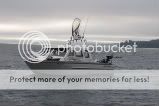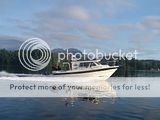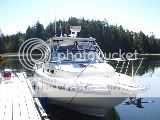quote:
Originally posted by spring fever
I'm going through this agony right now with my 2003 yammi 225. Got me wanting to trade in for a 300-but no money!! I can get 5K on trade-the motor is running beautifully-so what to do? The knowledge is like a cancer eating at your brain. I believe profisher said you can get it scoped which only requires a leg removal but then that's a 500 dollar bill -not huge but when the motor is only worth 4-5 K something to think on. I have changed the head zincs and will switch to salt away flushes and check the oil for water after every trip (do anyway) and run it. A fix if the head is not involved is in the 3-4K bracket-then that is decision time-guess this takes me out of the running for Tuna fisherman of the year-but I guess more than that it makes me very uncertain as to why I should ever entertain the thought of buying another Yamaha
"So many fish-So little Time"
I wouldn't run out any switch anything, yet?
I actually own two (2) of them and I can't say anything, except they are probably the best engines I have had. I really don’t know of any marine engine that doesn’t have some sort of an issue?
On these particular engines (Yamaha), it appears to be exhaust plates, manifolds and exhaust tubes. Since I do have twin 2003 Mercury Saltwater series, I decided to do some research. I found it interesting that whatever seems to come up always refers back to the Yamaha... and there isn’t much on the Mercury’s made by Yamaha and I am not sure if Mercury even used Yamaha's exhaust - I haven’t found that (yet). Mercury did use Yamaha power heads, but if Mercury specifications were different for the exhaust system, it may not even be an issue on Mercury? However, I have found given time all motors are susceptible to this… and ALL are subject and will fail, there is nothing the casual user can do to prevent it on any engine.
As far as I can find, this corrosion issue seems to be more with the first generation Yamaha V6's, two star emissions certified (check the sticker on the engine). The three star V6's had an additive paint or coating which helps solve the problem from what little I know. Then I am finding, not all Two Star V6's have this problem - but time will tell as they age.
According to what I can find, Yamaha (which I have not personally contacted) simply says, "Flush your engine after every use in salt water", but since this seems to be on the dry side of the exhaust, I personally don’t believe that and the flush system doesn’t even flush the internal parts of the engine? You would have to use rabbit ears to flush the internal parts of the engine.
You have to remember there are thousands of F225's out there and they all aren't failing due to corroded exhaust manifolds. Agreeably, 2003 F225's and earlier ones are more exposed to salt water corrosion (the 2004 and above models have better paint and coatings).
No need to fret about it. Use the thing and if you experience overheat conditions NOT related to poppit valves(aka PCV) , thermostats or water pumps - then you (and I ) will cross that bridge when we come to it.
I will take this issue over a lot of others; including, the electrolysis problems of the Bravo III has! That one can really be a big, expensive nightmare – been there!




